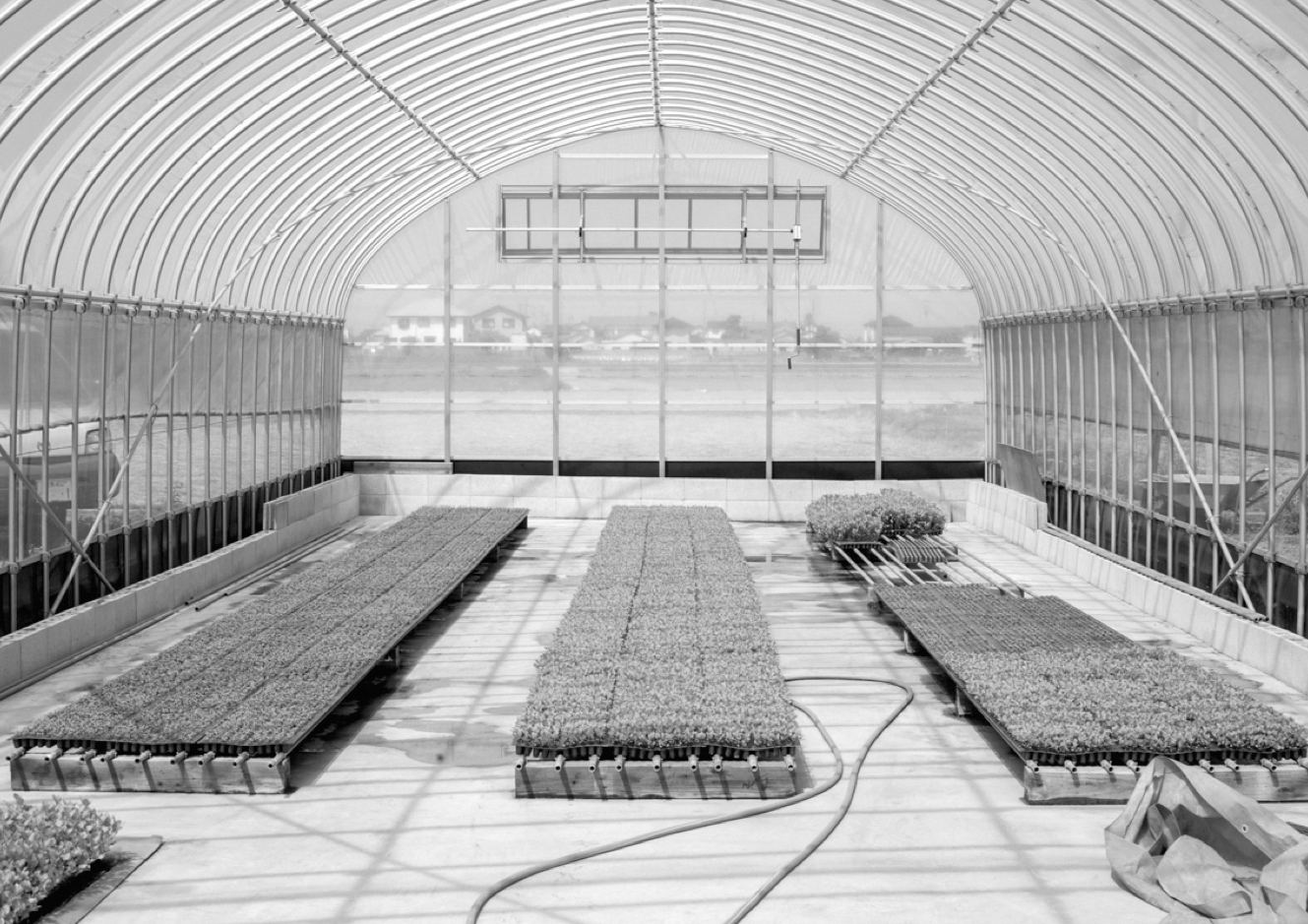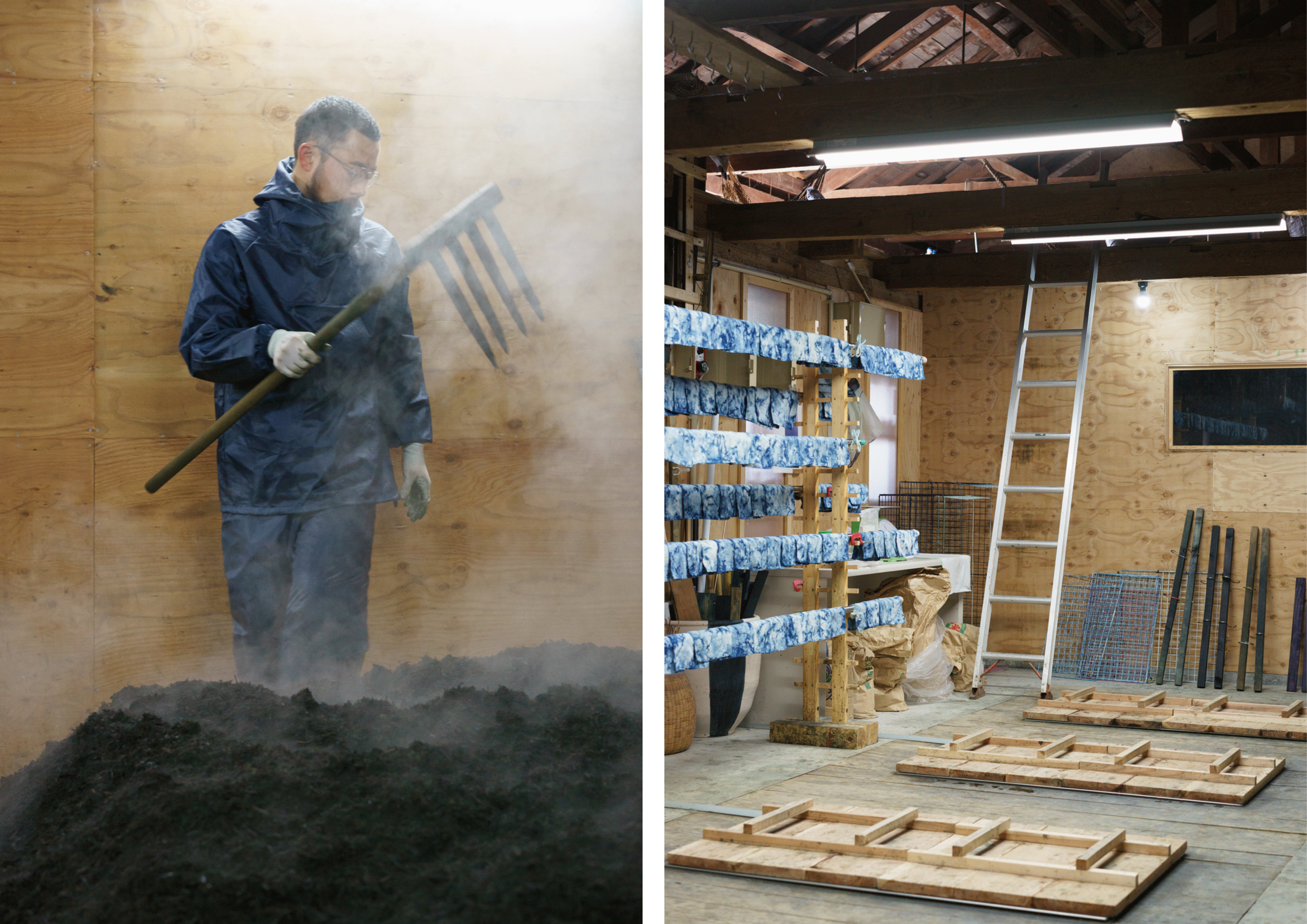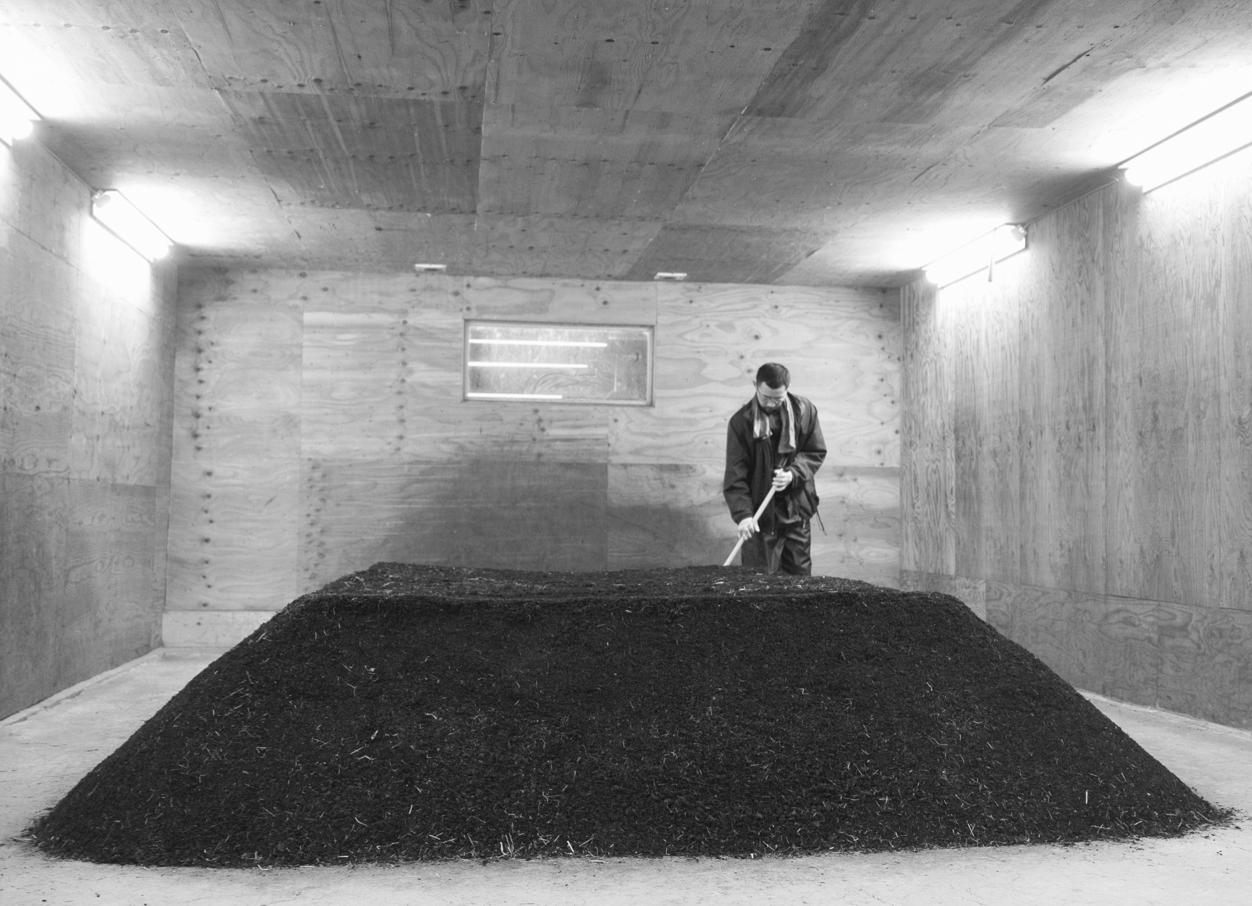
In Japanese life and culture, there has never been a clear distinction between art, craft and design. Generations of artisans have for centuries forged and refined their crafts, which have become the envy of the modern world. Spurred by an awareness of the unseen treasures produced by these craftspeople, designer-authors Uwe Rttgen and Katharina Zettl set out across the country to find the finest examples, to document the makers and their workshops and the rural landscapes that surround them. Here we share an edited extract from their new book Craftland Japan.
BUAISOU | INDIGO DYERS
There were two of them at first. But soon friends with more contacts and experience came along, and BUAISOU were able to position themselves across a broader range. In contrast to the traditional mode of craft specialization in Japan, they focus on a holistic business model by offering own-grown and own- processed indigo and dyeing from a single source.
They work in synchrony with the planting cycle and the seasons. The field shall be ploughed, the indigo seeds sown and the seedlings planted. The plants must be watered and harvested and the valuable leaves separated from the stems and dried.
Everything is done with the aim of creating the basis for dyeing: the fermented, dried and preserved indigo leaves known as sukumo. This natural dye produces a unique deep blue colour, or lighter shades if desired. The fermentation process of the leaves is called nekasu (letting sleep), which takes place in a special room, the nedoko (sleeping room) over about four months in winter. This organic material is turned and aired once a week, an arduous process during which the steaming air saturated with ammonia makes it hard to breathe.

BUAISOU use the sukumo in a heated lye of wood ash from smoking katsuobushi (bonito flakes), shell lime and wheat bran as a nutrient. This challenging traditional method based on a fermentation process in the vat is called jigoku date (literally, producing hell) and it makes the indigo dye pigment soluble. The initially colourless indigo reacts in the presence of atmospheric oxygen, turning from yellow-green to blue on the dyed material. Indigo from Tokushima is also called Awa ai, Awa being the old name of the region. Ai means indigo- dyed blue, but it also means love. Beloved blue. You have to love it to give it this much care and attention.
Throughout the year, BUAISOU dye the textiles or other things their customers ask for, and, if required, produce screen-printing templates for them. Last but not least, they design and sew a range of their own products. With the realization of BUAISOU jeans one of their dreams as indigo dyers has come true. They even dye the yarn used for weaving the denim. For their attitude they are highly appreciated in the younger Japanese craft scene. The conceptual approach turns them into a new species of craftsperson. Young, willing to take risks, creative, interdisciplinary, and at the same time locally analogue and digitally networked worldwide. Craftspeople are often considered to have little affinity for the digital world, digital devices being largely useless for physical work with one's own hands. But BUAISOU could be described as a handicraft influencer, with Instagram as their digital tool. The platform ensures a constant flow of interested fans and customers.


A remarkable crowd of fans on social media follows the worldwide travels of the craftworkers and their cyclical activities in the fields. The followers enjoy seeing the results of participants in the dyeing courses run by BUAISOU in Tokushima and abroad, when they get invited by companies and organizations; collaborations with other brands; and of course BUAISOU's own indigo-dyed products. Thanks to high-quality photographs, the young collective elegantly present the aesthetics of painstaking work. They also show the appeal that a simple, seemingly more old-fashioned life can have. It is their philosophy.
Kakuo Kaji became interested in natural dyeing with indigo during his studies in textile design. He co-founded the brand BUAISOU with a craftsman he met at a local programme to encourage young farmers and indigo dyers back to the traditional indigo region of Tokushima.


Ken Yuki studied the fermentation of indigo under highly acclaimed sukumo master Osamu Nii. The process was originally developed in Awa province (today part of Tokushima Prefecture) around the sixteenth century.
Yuya Miura was involved in the design and manufacture of indigo-dyed textiles before he joined BUAISOU.
Besides these three, Tadashi Kozono joined the team after a few years, while Kyoko Nishimoto has been responsible for public relations and social media for a long time. Today's producers of sukumo are dependent on buying the indigo plant (Polygonum tinctorium) from local farmers or growing it themselves. Custom dyers only dye clothes, fabrics, yarns and sometimes small accessories made of natural materials such as wood or leather. Indigo dyers also often offer workshops in which you can dye your own garment, bag or shawl with a screen print or batik motif you have created yourself. And then there is BUAISOU, who offer everything from a single source: growing indigo plants, sukumo making, dyeing textiles and unusual objects, workshops, sewing and fashion from their own production.


Some people say Tokushima is the centre of indigo dyeing, but it's more the centre of sukumo. The center of indigo dyeing is Kyoto or other places here in Japan. [...] Actually, there are only five sukumo makers in Tokushima right now, and two more in other regions. At BUAISOU we make sukumo and at the same time we do indigo dyeing. A long time ago there were famous indigo-dyeing teachers from Kyoto and Fukuoka. We have only been doing this for a few years, but we feel each place, each dyer, is different. The last time, a famous indigo-dyeing teacher came from Miyazaki. I felt that the indigo-dyeing process from there is totally different from ours. Kakuo Kaji
My dream is just to go on and do indigo dyeing continually, and not give up. Even if our staff were more than 100 people, like in a big company, I would want to continue farming, dyeing, sewing, designing by myself. And even if this company were only one person, I would like to do the same. That's all. Kakuo Kaji
Edited extract from Craftland Japan, by Uwe Rttgen and Katharina Zettl,arina Zettl, Published by Thames & Hudson.

Image 1: Planting seedlings, watering and weeding in the field. Image 2: Young indigo plants are grown in greenhouses. 3: One of BUAISOU's greenhouse serving multiple purposes throughout the year. 4: During the four-month fermentation process the indigo leaves are aired weekly. 5: As is usual in Japan, the vats for dyeing are sunk into the workshop floor. 6: The dye solution is mixed from the dried sukumo and other ingredients. 7: The sukumo is raked into a neat pile after it has finished airing. 8: Near BUAISOU's workshop the Yoshino River flows through a wide valley flanked by mountain ranges. 9: Ceramic bowl from SUEKI with tiny indigo bubbles visible in the cracked surface of the glaze, BUAISOU bandana with silkscreen motif. 10: Dyeing takes place all year round in heated dyeing vats. 11: Kirikaeshi, the weekly watering and stirring of the fermenting leaves. Images 1, 3, 4, 5, 6, 7, 8, 9, 10, 11 Uwe Rottgen and Katharina Zettl Image 2 Kyoko Nishimoto / BUAISOU.
Add a comment